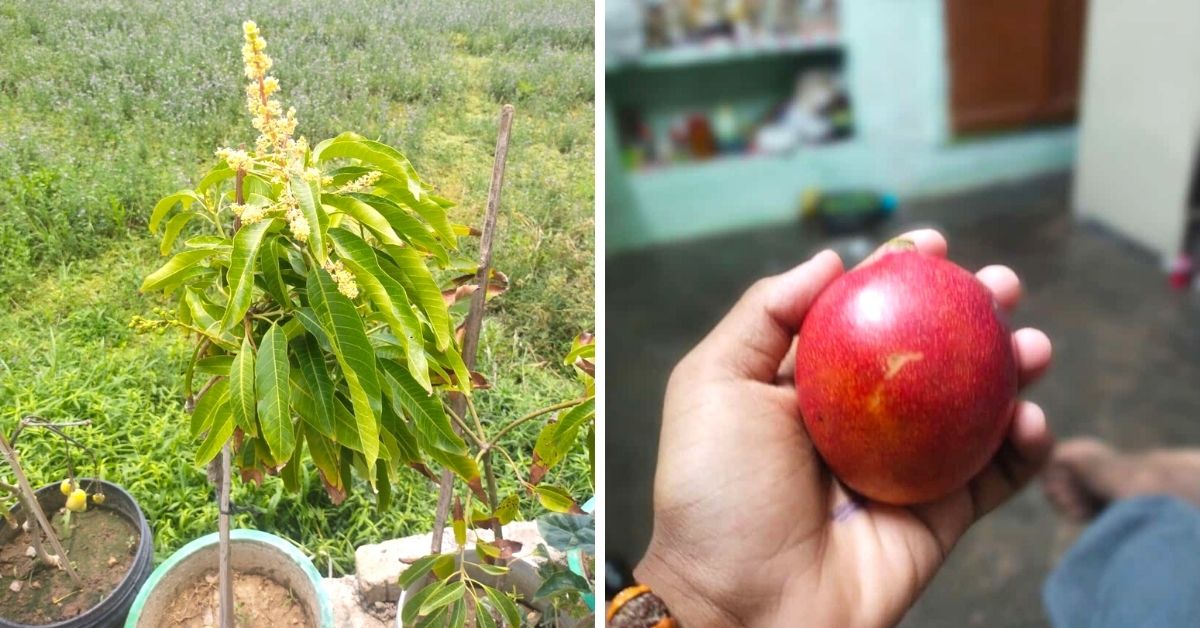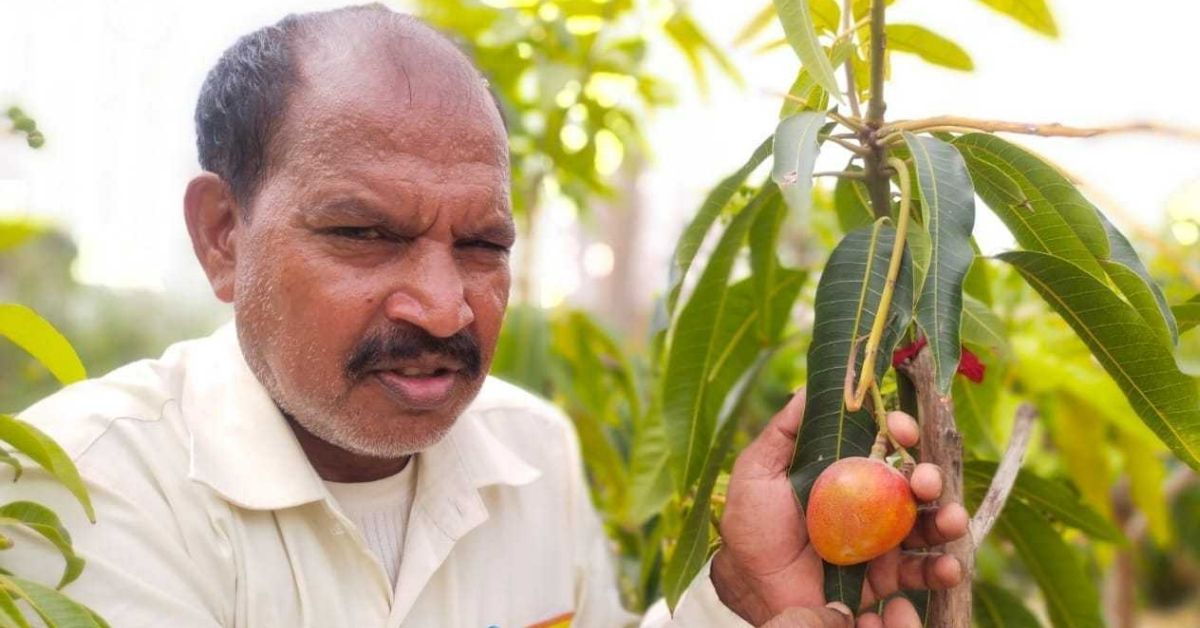While Alphonso mangoes from the Konkan region, as well as the recently popularised 3.5-kilo heavy Noorjahan mangoes in Madhya Pradesh, are basking in the glory of their popularity on social media, there is another superstar from the fruit variety in the making.
Hiding in the corners of Girdhapura, roughly 15 km from Kota, the IIT hub in Rajasthan, Shree Kishan Suman, an award-winning innovative farmer, is cultivating three saplings of Miyazaki mango in the desert area.
Miyazaki, an exclusive variety, is known as the world’s most expensive mango, costing up to Rs 2.7 lakh a kilo.
Shree Kishan, who has a landholding of 2 acres, says the mango has flaming red skin on the outside and bright orange pulpy fruit inside, somewhat resembling jelly. “The mangoes are sweet and grow up to a size similar to other mango varieties. It is their rarity that makes them so costly,” he tells The Better India.
Interestingly, the Miyazaki mango, grown on the Kyushu island of Japan, comes from the Irwin mangoes cultivated in Florida, USA. They came to Japan in the mid-80s to grow in warmer climates. The mangoes are known to have 15 per cent more sugar than their counterparts. If grown in optimum weather conditions, each Miyazaki mangoes can weigh around 350 grams and develop a distinct red colour.

Shree Kishan says he learned about the mango variety on YouTube and was impressed. He discussed his findings with his friend to increase his understanding of the fruit’s commercial value as well as feasibility in Indian weather conditions. “I thought of getting the saplings and earning money from the exotic variety. In 2018, my friend gave me three saplings that he had sourced from Thailand,” he adds.
‘Risks and experiments can reap success’
Since then, the farmer has been tending to the saplings with adequate nourishment and keeping them healthy. Once the plants grew 4-feet tall and started bearing fruits, Shree Kishan posted their pictures on social media, which attracted massive attention.
“The fruit can cost anywhere between Rs 21,000 and Rs 2 lakh per kilo in the international market. The plants are still fruiting, and I have not started selling them yet,” he says, admitting that for now, he does not intend to sell commercially and wants to share them with family and friends instead.
He adds that netizens who checked his post on social media have been calling to procure a graft from him. “Potential buyers are ready to pay Rs 25,000 to Rs 50,000 for a sapling,” he says.
Shree Kishan notes that he does not feel the need to protect the mango saplings with dogs or security personnel right now, but may require them in the future.
Meanwhile, Sankalp Singh Parihar, another mango farmer and a grower of Miyazaki variety in Jabalpur, Madhya Pradesh, says, “I started growing them in 2016 and have started bearing fruits. The topmost offer I have received is Rs 21,000 for a kilo, but I have not sold them commercially as yet.” Sankalp got his saplings from a person during a train journey and since realised the unique value of the fruit variety.
Shree Kishan says that farmers should innovate and involve themselves in horticulture. “Many farmers fear that markets are unstable and so they may not receive good income. But a solution to this is processing the fruits and selling them for a better value. This also generates employment and ensures steady income through the year,” he says.
He adds that farmers avoid taking risks fearing losses, but should not worry as the risks are equal irrespective of the crops. “There are risks involved in cultivating traditional crops that have been grown across generations. Even cultivating a new crop comes with the same amount of risks. But this mango variety offers the potential to reap huge benefits. Hence, farmers should not hesitate to experiment,” he says.
Check out the mango varieties found across India here.
Edited by Divya Sethu
If you found our stories insightful, informative, or even just enjoyable, we invite you to consider making a voluntary payment to support the work we do at The Better India. Your contribution helps us continue producing quality content that educates, inspires, and drives positive change.
Choose one of the payment options below for your contribution-
By paying for the stories you value, you directly contribute to sustaining our efforts focused on making a difference in the world. Together, let's ensure that impactful stories continue to be told and shared, enriching lives and communities alike.
Thank you for your support. Here are some frequently asked questions you might find helpful to know why you are contributing?

